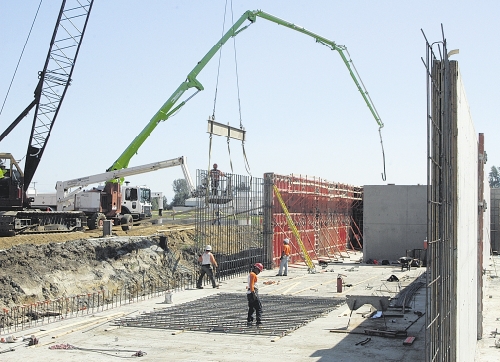forum
library
tutorial
contact

Bill Would Ease Permitting Process for Digesters
by Steve BrownCapital Press, January 27, 2011
|
the film forum library tutorial contact |

|
Bill Would Ease Permitting Process for Digesters
by Steve BrownCapital Press, January 27, 2011 |
Professor says anaerobic digesters offer unique solution
 OLYMPIA -- The benefits of anaerobic digesters have prompted a quick response by lawmakers early this legislative session.
OLYMPIA -- The benefits of anaerobic digesters have prompted a quick response by lawmakers early this legislative session.
Simply put, the machines compost organic waste -- primarily dairy waste -- and limit access to oxygen, which allows microbes to produce methane. The methane then powers a generator to make electricity.
Washington state has five digesters in operation, producing 4.35 megawatts of electricity, enough for about 3,000 homes.
Craig Frear, assistant professor at Washington State University, called digesters unique.
"They're both energy-producing tools and waste-management tools. They are also a tool for fiber and nutrient recovery," he said.
"We shouldn't be content with five digesters. We shouldn't be content with 40," he told a Jan. 18 work session of the Senate Agriculture and Rural Economic Development Committee.
Forty is the number of digesters projected to be in operation by the year 2020. That number would encompass one-third of all the dairies in the state. He said reaching that goal would require about $15 million a year in private capital.
The 40 anaerobic digesters would yield 15 percent of the nitrogen and 100 percent of the phosphorus needed on 5 million acres of wheat and barley in the Pacific Northwest.
"Washington has the potential to be the national leader in the anaerobic digester field," Frear said.
Daryl Maas, co-owner of Farm Power, which operates digesters as a tenant on two farms, said air quality permitting is a concern. A dairy operating under best management practices is exempt from the state Clean Air Act, but once he takes those emissions from the waste and runs them through an engine, it is subject to a low emission threshold.
Maas said he encountered many costs and delays in the permitting process. Regulations should be less onerous on digester owners, he said.
"Keep in mind that engine is the lowest source of emissions on the farm," said Dan DeRuyter, who has a digester at his 900-cow dairy near Yakima.
Mark Asmundson, of the Northwest Clean Air Agency, said a digester eliminates the methane, but the engine is still a major source of sulfur emissions.
"It's not the silver bullet we're all looking for," he said. "To call the generation of electricity an ag product is a kind of a stretch of the English language."
Creating a permitting exemption for digesters under the Clean Air Act is the intent of House Bill 1070, sponsored by Rep. Barbara Bailey, R-Oak Harbor.
"Anaerobic digesters represent clean, renewable energy technology," Bailey said. "They essentially put cows on the grid. We should make it easier to get a permit for this technology. It's good for our farmers, it's good for our environment, and it's good for our green energy supply."
learn more on topics covered in the film
see the video
read the script
learn the songs
discussion forum
